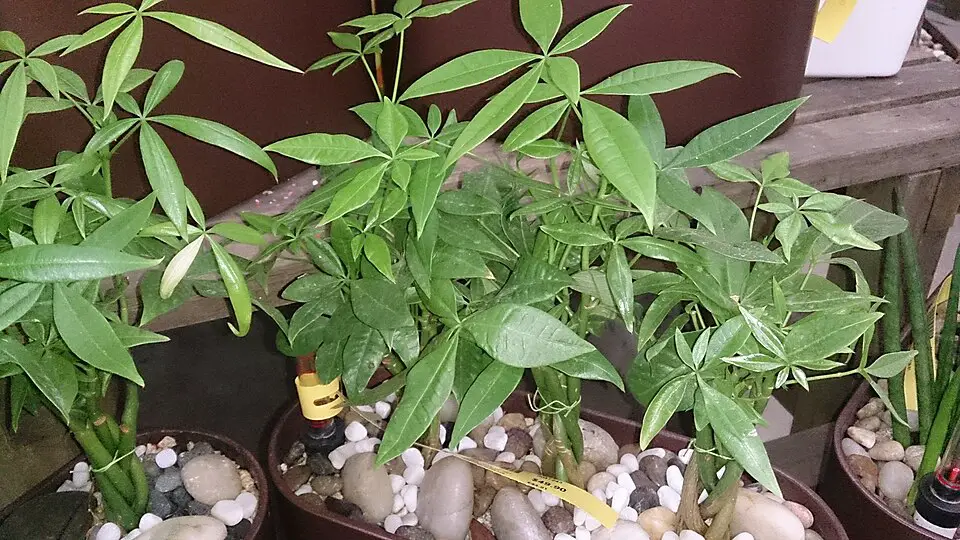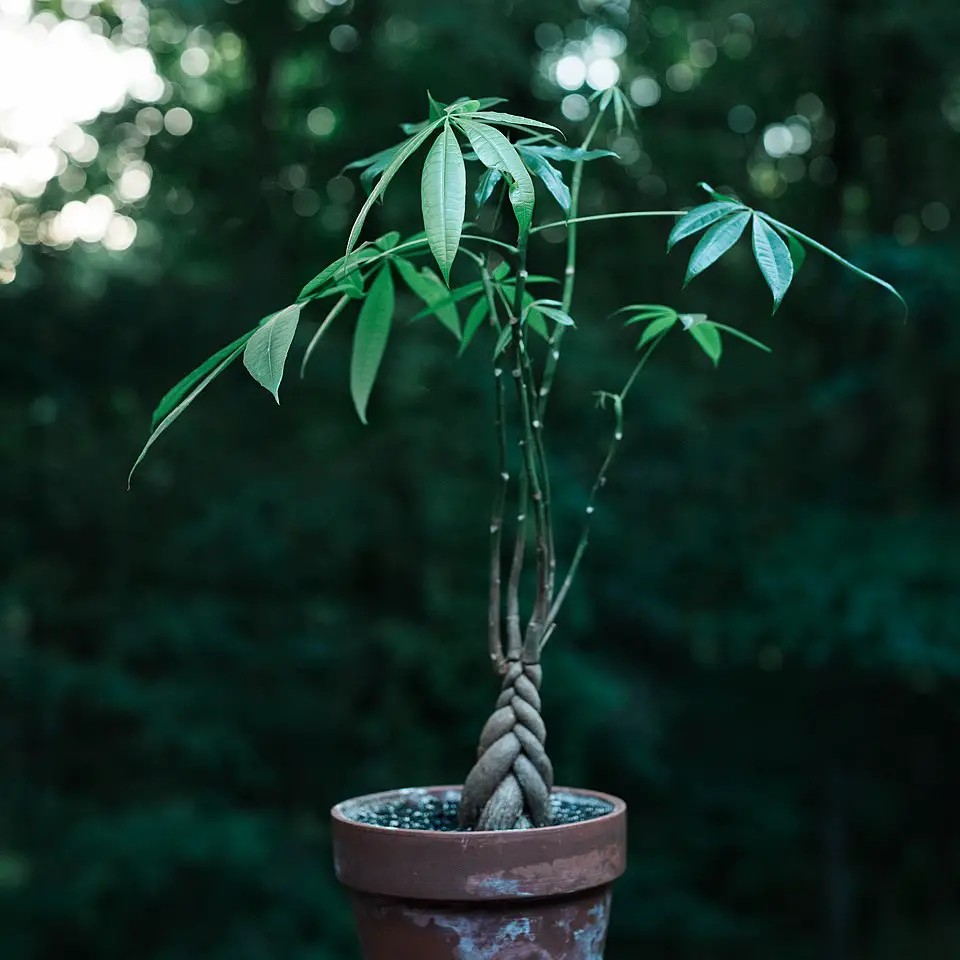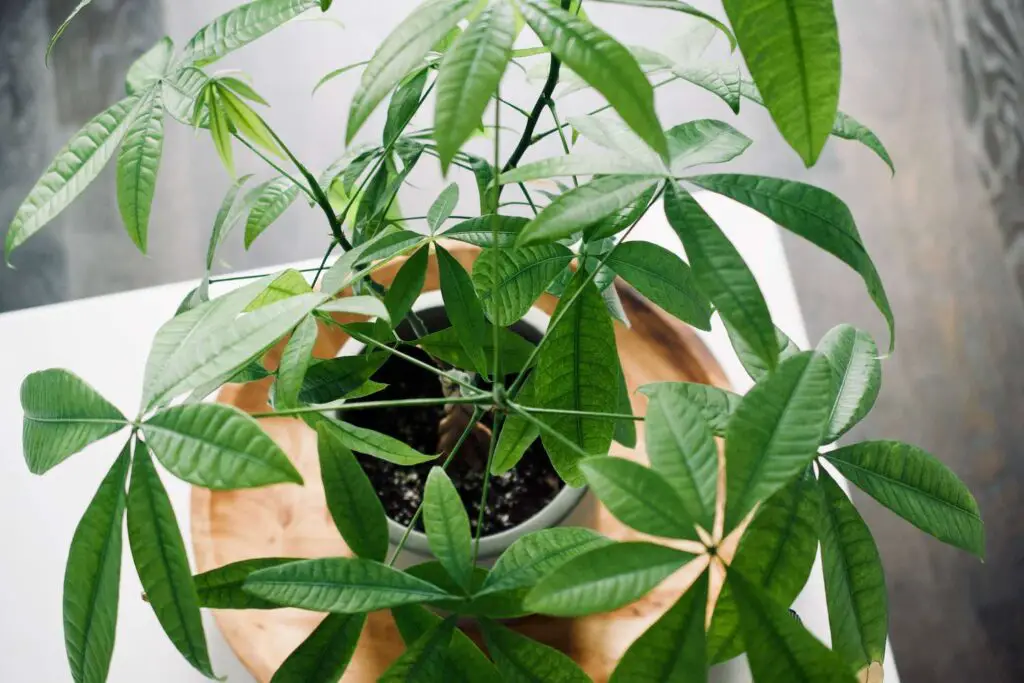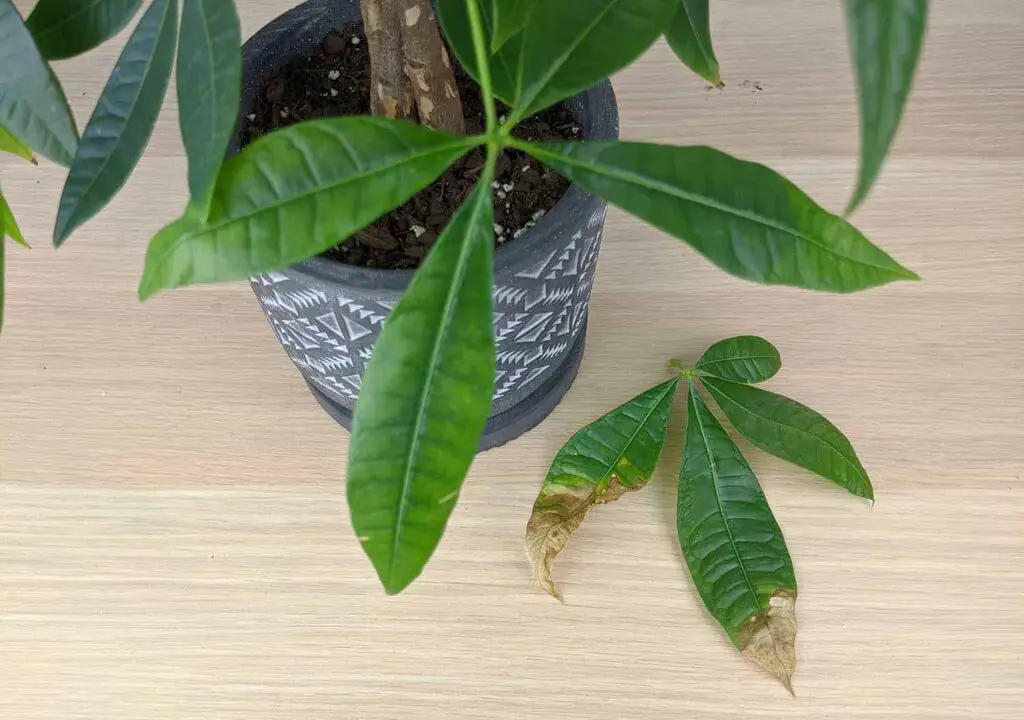Choosing the right potting soil for a Money Tree is essential for its growth and health. The best mix typically includes well-draining components that provide both moisture retention and aeration. A blend of peat moss, perlite, and orchid bark works well, allowing roots to thrive without becoming waterlogged.
Understanding the Money Tree
The Money Tree, or Pachira aquatica, is a popular houseplant known for its unique braided trunk and lush green leaves. It is often associated with good fortune and prosperity in various cultures. Native to Central and South America, this plant thrives in tropical climates, making it essential to recreate similar conditions in a home environment. Proper potting soil is a key factor in achieving this, as it influences water retention, drainage, and nutrient availability.

Money Trees prefer a well-balanced soil mix that maintains moisture without becoming overly saturated. This balance is crucial because too much water can lead to root rot, while too little can cause the plant to dry out. Understanding the components of potting soil will help you create the best mix for your Money Tree.
Key Components of Potting Soil
When selecting or creating potting soil for your Money Tree, consider the following essential components:
- Peat Moss: Retains moisture while providing some aeration.
- Perlite: Improves drainage and prevents compaction of the soil.
- Orchid Bark: Adds texture and further enhances drainage.
- Compost: Provides essential nutrients to support growth.
Choosing the Right Mix
When looking for potting soil, you can either buy pre-mixed options or create your own custom blend. Here are some considerations for each approach:

Pre-Mixed Options
Many garden centers offer pre-mixed potting soils specifically designed for tropical plants. These mixes usually contain the right balance of ingredients to support your Money Tree. Look for labels that indicate good drainage and moisture retention properties. Some popular brands even have specialized mixes for succulents and cacti, which can also work well for Money Trees due to their similar needs.
Custom Mixes
If you prefer to create your own potting soil blend, here is a simple recipe:
- 1 part peat moss
- 1 part perlite
- 1 part orchid bark
- 1/4 part compost (optional)
This combination ensures that your Money Tree has access to adequate moisture while maintaining excellent drainage. Adjust the ratios to suit your specific environment; for instance, increase the amount of perlite if your home tends to retain moisture.

Considerations for Potting Soil
Several factors should influence your choice of potting soil for a Money Tree:
| Factor | Considerations |
|---|---|
| Drainage | Ensure excess water can escape easily. |
| Moisture Retention | Select materials that hold moisture without becoming soggy. |
| Nutrient Content | Opt for mixes with organic matter or consider adding fertilizers. |
By understanding these components and factors, you can confidently select or create the ideal potting soil for your Money Tree. This attention to detail will help ensure that your plant thrives in its new environment.
Common Mistakes in Potting Soil Selection
Choosing the right potting soil for your Money Tree can be challenging. Many new plant owners make common mistakes that can hinder the growth and health of their plants. Understanding these pitfalls can help you avoid them.
Overly Dense Soil
A common mistake is using overly dense soil. Heavy soils can retain too much water, leading to root rot. Money Trees need a light mix that allows for proper aeration. Avoid using garden soil or potting mixes designed for plants that thrive in moisture, as these can suffocate the roots.

Neglecting Drainage
Ignoring drainage is another frequent error. Waterlogged roots can lead to fungal infections and decay. Always ensure that your pot has adequate drainage holes and consider adding materials like perlite or coarse sand to enhance drainage in the soil mix.
Using Incorrect Fertilizers
Fertilizing with the wrong type or quantity of fertilizer can also harm your Money Tree. Over-fertilization can lead to salt build-up in the soil, damaging the roots. Use a balanced, water-soluble fertilizer at half-strength during the growing season, typically spring and summer.
Signs of Poor Potting Soil
Recognizing the signs of poor potting soil is crucial for maintaining the health of your Money Tree. Here are some indicators that the soil mix may not be suitable:
- Yellowing Leaves: This could indicate root rot from overly wet soil or nutrient deficiencies.
- Wilting: If your Money Tree wilts despite regular watering, it may be suffering from poor drainage or compaction.
- Mold Growth: Mold on the surface of the soil is a sign of excess moisture and poor aeration.
- Pest Infestation: Poor quality soil can harbor pests such as fungus gnats, which thrive in overly moist conditions.
Testing Potting Soil Quality
If you are unsure about the quality of your potting soil, there are several tests you can conduct to evaluate its suitability for your Money Tree:
Water Drainage Test
To test how well your potting soil drains, follow these steps:
- Fill a pot with the soil mix you want to test.
- Water it thoroughly until water begins to drain from the bottom.
- Observe how quickly the water drains. Ideally, it should drain within a few minutes.
Moisture Retention Test
This test helps determine how well the soil retains moisture:
- Water your soil mix and let it sit for an hour.
- After an hour, check how much moisture remains by feeling the soil.
- If it feels soggy or overly dry, adjust your mix accordingly.
Enhancing Potting Soil with Amendments
If you find that your potting soil needs improvement, consider adding amendments to boost its performance. Here are some beneficial amendments for Money Tree potting soil:
- Vermiculite: Increases moisture retention while improving aeration.
- Coconut Coir: A sustainable alternative to peat moss that retains moisture and adds aeration.
- Worm Castings: An excellent organic fertilizer that enriches the soil with nutrients.
Each amendment can enhance different aspects of your potting soil, ensuring that your Money Tree has the best chance to thrive.
Repotting Your Money Tree
Repotting is an essential part of maintaining a healthy Money Tree. This process allows the plant to access fresh nutrients and prevents root crowding. Here are some tips for repotting:
- Choose the Right Time: The best time to repot is during the spring when the plant is actively growing.
- Select a Slightly Larger Pot: Choose a pot that is one size larger to give roots room to grow without overwhelming them.
- Handle Roots Gently: Be careful not to damage the roots when removing the plant from its current pot. Trim any dead or unhealthy roots before repotting.
By following these considerations and methods, you will create an ideal environment for your Money Tree, ensuring it remains healthy and vibrant as it grows.
Maintaining the Right Soil Conditions
Once you have selected the appropriate potting soil for your Money Tree and successfully repotted it, maintaining the right soil conditions is crucial for its ongoing health. Factors such as moisture levels, pH balance, and nutrient availability need to be monitored regularly.
Moisture Management
Proper moisture management is vital for the health of your Money Tree. Here are some strategies to ensure your plant receives the right amount of water:
- Watering Schedule: Establish a consistent watering schedule. Water when the top inch of soil feels dry to the touch.
- Drainage Checks: Always check that excess water drains from the pot. Standing water can lead to root rot.
- Humidity Levels: Money Trees thrive in higher humidity. Consider misting the leaves or using a humidity tray to maintain optimal conditions.
Monitoring Soil pH
The pH level of the soil affects nutrient availability. Money Trees prefer slightly acidic to neutral soil (pH 6.0 to 7.0). You can test the pH using a soil test kit available at garden centers. If adjustments are needed:
- To Lower pH: Add elemental sulfur or peat moss to the soil mixture.
- To Raise pH: Incorporate lime into the soil mix.
Nutrient Management
Nutrients are essential for the growth and vitality of your Money Tree. Ensuring that your plant receives adequate nutrition involves regular fertilization and monitoring nutrient levels in the soil.
Fertilization Basics
Fertilizing your Money Tree correctly is key to promoting growth and preventing deficiencies. Here are some guidelines:
- Frequency: Fertilize during the growing season, typically every 4-6 weeks from spring through summer.
- Type of Fertilizer: Use a balanced, water-soluble fertilizer, such as a 20-20-20 or a specialized indoor plant fertilizer.
- Application: Dilute the fertilizer to half strength and evenly distribute it around the base of the plant, avoiding direct contact with the roots.
Signs of Nutrient Deficiency
Keep an eye out for signs of nutrient deficiencies, which may manifest as:
- Yellowing Leaves: This often indicates nitrogen deficiency.
- Pale New Growth: This may suggest a lack of iron or magnesium.
- Browning Leaf Edges: This could be a sign of potassium deficiency.
Pest Management in Potting Soil
Pests can be a significant issue when it comes to maintaining healthy potting soil. Certain pests thrive in moist environments and can damage your Money Tree. Here are some common pests and how to manage them:
Common Pests
- Fungus Gnats: These small flies are often seen around damp soil. They lay eggs in wet conditions, and their larvae feed on roots.
- Aphids: These tiny insects suck sap from leaves and stems, leading to wilting and yellowing foliage.
- Spider Mites: These pests thrive in dry conditions and can create webbing on leaves, causing them to become discolored.
Pest Control Strategies
Implement these strategies to manage pests effectively:
- Allow Soil to Dry: Letting the top layer of soil dry out between waterings can help reduce fungus gnat populations.
- Insecticidal Soap: Use insecticidal soap or neem oil to treat infestations of aphids and spider mites.
- Sticky Traps: Place yellow sticky traps near your Money Tree to catch adult fungus gnats.
Seasonal Care Adjustments
Your Money Tree will need different care depending on the season. Adjusting your approach can help it thrive year-round.
Spring and Summer Care
During the growing season, focus on promoting growth by following these practices:
- Increased Watering: As temperatures rise, increase watering frequency while ensuring proper drainage.
- Regular Fertilization: Fertilize every 4-6 weeks to support new growth.
Fall and Winter Care
As temperatures drop, adjust your care regimen:
- Reduce Watering: Cut back on watering as growth slows; ensure the soil dries out slightly between waterings.
- No Fertilization: Hold off on fertilizing during this period as the plant enters dormancy.
By implementing these maintenance practices, you will create an ideal environment for your Money Tree, supporting its growth and health throughout the year.
Additional Tips for Money Tree Success
In addition to the seasonal care adjustments outlined earlier, there are several other factors to consider that can contribute to the overall health of your Money Tree. Implementing these tips can further enhance your plant’s growth and vitality.
Choosing the Right Location
The placement of your Money Tree can significantly impact its health. Here are some location considerations:
- Light Requirements: Money Trees prefer bright, indirect light. Avoid direct sunlight, which can scorch the leaves.
- Temperature Stability: Maintain a stable temperature between 60°F and 75°F. Avoid placing the plant near drafts, heaters, or air conditioning vents.
- Avoid Overcrowding: Ensure your Money Tree has enough space to breathe and grow without competing with other plants for light and resources.
Leaf Care
Taking care of the leaves is crucial for the overall well-being of your Money Tree. Here are some practices:
- Dusting Leaves: Regularly wipe the leaves with a damp cloth to remove dust. This allows the plant to photosynthesize effectively.
- Pruning Dead Leaves: Trim away any dead or yellowing leaves to encourage new growth and improve air circulation.
Identifying Common Issues
Being proactive in identifying potential problems can save your Money Tree from serious damage. Here are some common issues and their solutions:
- Leaf Drop: If your Money Tree is dropping leaves, it may be due to sudden temperature changes or overwatering. Adjust your care routine accordingly.
- Brown Leaf Tips: This issue often indicates low humidity or underwatering. Increase humidity levels or adjust your watering schedule.
Final Thoughts
Successfully growing a Money Tree requires attention to detail and a commitment to maintaining the right conditions. The right potting soil mix is fundamental in ensuring that your plant thrives. Selecting a blend that promotes drainage and moisture retention is essential. Understanding how to monitor moisture levels, pH balance, and nutrient availability will further support your plant’s health.
Moreover, seasonal care adjustments are vital for adapting to your Money Tree’s changing needs throughout the year. By implementing proper watering schedules, adjusting fertilization practices, and managing pests, you can foster a robust environment for your Money Tree.
In summary, whether you’re a seasoned plant owner or a beginner, taking the time to learn about potting soil, care routines, and environmental factors will ensure that your Money Tree flourishes for years to come. With patience and diligence, you can create a thriving space for this beautiful and symbolic plant in your home.
